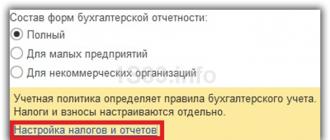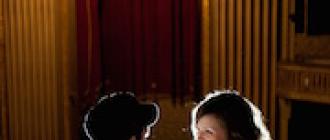And until now. On that summer day, August 19, all highways were blocked, depriving people of the opportunity to travel from their dachas to the city. Armored personnel carriers are walking along the highways, and citizens are confused and bewildered.
All central channels show “Swan Lake”, then a news broadcast begins, announcing the introduction of a state of emergency.
Meeting of the Emergency Committee before the August Putsch
Members of the State Emergency Committee took control of the state into their own hands, reporting that the current President M. Gorbachev was ill and therefore could not continue to perform his presidential functions. In fact, Gorbachev was in Foros, at the presidential dacha, which on the morning of August 19 was blocked by the Sevastopol regiment of the USSR KGB troops. Vice President Yanaev issues a decree appointing him to the position of acting president.
A few days earlier, on August 17, future members of the State Emergency Committee meet at the ABC facility (the closed guest residence of the KGB). Here the conspirators decide to adopt a state of emergency from August 19, form the State Emergency Committee and demand from Gorbachev that he sign the relevant decrees or resign, transferring powers to Yanaev. In addition, it was planned to detain Yeltsin at the Chkalovsky airfield after his arrival from Kazakhstan.
On August 18, a group of committee representatives flew to Foros to see Gorbachev to obtain his consent to accept the state of emergency. The President did not give them his consent.
State Emergency Committee transcript: State Committee on a state of emergency - a body created by the top leadership of the USSR.
Organizers of the coup
If those who were opponents of the State Emergency Committee broke through to power during the collapse of the USSR and remained in their posts for quite a long time, then the career of the State Emergency Committee was over immediately after the putsch. The exceptions were Army General Varennikov, who was not formally a member of the State Emergency Committee, but actively assisted it, and Starodubtsev, the chairman of the Peasant Union of the USSR, who was officially a member of this conspiratorial group. After the putsch failed, he was accused of treason, according to Art. 64 of the Criminal Code of the RSFSR. However, in 1992, Starodubtsev was released from custody, where he was in Matrosskaya Tishina, for health reasons.
The remaining key figures of the coup organizers had unenviable future fates. The State Emergency Committee included:
- G. Yanaev. After his arrest, he remained in a pre-trial detention center until 1994, when he was released from prison under an amnesty.
- O. Baklanov. He was arrested and released under an amnesty in 1994.
- B. Pugo. Shot himself on August 22, 1991.
- V. Kryuchkov. He was arrested and in 1992 was released on his own recognizance. Released under amnesty.
- V. Pavlov. August 19 Pavlova with alcohol poisoning was hospitalized at the Central Clinical Hospital, from where he was later taken into custody in a pre-trial detention center, where he remained until the 1994 amnesty.
- D. Yazov. After the end of the coup and imprisonment in a pre-trial detention center, he was released under an amnesty in 1994.
- A. Tizyakov. After the end of the coup and imprisonment in a pre-trial detention center, he was released under an amnesty in 1994.
- V. Starodubtsev.

The list shows how many people were members of the State Emergency Committee. However, besides them, several more people who actively assisted the conspirators were accused of treason and arrested.
Those arrested were punished in “Matrosskaya Tishina” until 1992. Their cases were not brought to trial, and in 1994 an amnesty was declared to all.
Reasons for creating the State Emergency Committee
On August 19-21, 1991, members of the country's self-proclaimed government body attempted to remove the current president and seize power. The creation of the State Emergency Committee is a consequence of Gorbachev’s unsuccessful attempts to reorganize the country, which is in deep crisis.
After a period of stagnation, the country's economy found itself in dire straits. USSR President Gorbachev carried out diverse reforms, which became known as “Perestroika.” However, they did not bring the desired economic effect. The intensification of the crisis, the collapse of the social sphere, the growth of drunkenness and unemployment gave rise to an acute crisis of confidence in Gorbachev. Both his opponents and former comrades were dissatisfied with the results of the president’s activities. The highest party apparatus began a struggle for power, and quite soon there were supporters of the overthrow of the president, who formed the composition of the State Emergency Committee.
The last straw was Gorbachev's decision to transform the USSR into a Union of Sovereign States, which greatly angered some conservative political figures.
As a result, after Gorbachev left for Foros, the conspirators began active work to remove the president from power. What are the reasons for the creation of the State Emergency Committee? Among them are:
- The desire for power.
- The desire to preserve the integrity of the country.
- Dissatisfaction with Gorbachev's reforms.
Video about the activities of the Emergency Committee
Goals of the State Emergency Committee
It is worth noting that the activities of the State Emergency Committee were largely supported by the population. Some sources inform about 80% of the country's regions that do not support the leadership of the USSR these days. In the address to the people the following goals of the State Emergency Committee were named:
- Restoring the USSR's position in the world.
- Changing the course of reform policy.
- Raising the living standards of the people.
- Preservation of the composition of the USSR.
The modern Russian language identifies the word “putsch” with the concept of “a coup organized by a group of conspirators,” and the term “coup d’état” with a fundamental change in the life of the state. Some politicians note that the actions of the State Emergency Committee cannot be called either a putsch, a coup, or a conspiracy. Since the members of the State Emergency Committee did not plan a radical change in the life of the state, but, on the contrary, an attempt was made to preserve the existing constitutional order, social and political system facing the danger of their “radical change”, which came from Gorbachev.
The consequences of the work of the State Emergency Committee
When employees of the Alpha unit surrounded the country dacha of the President of the RSFSR Yeltsin and he learned about the formation of the State Emergency Committee and the attempt coup d'etat, decided to immediately go to the White House. The Alpha commander received the command to let the president leave the dacha, however, such a decision had fatal consequences for the State Emergency Committee.

- Arriving in Moscow, Yeltsin and other leaders of the RSFSR declared at a press conference about the illegality of the actions of the conspirators, calling what was happening a coup and calling on everyone for a general strike. A crowd of people gathers at the White House. The radio station “Echo of Moscow” is broadcasting Yeltsin’s speech.
- The organizers of the putsch sent a battalion of tanks to the White House, which, after negotiations, subjected to psychological pressure from the crowd, went over to the side of Yeltsin and the people.
- The crowd is blocking the approaches military equipment to the White House, building barricades from trolleybuses and other improvised means along Tverskaya Street not far from the National Hotel. People rally against the coup d'etat. The alpha special forces are given the order to storm the White House, however, they refuse to do so.
- On the night of August 21, the underground transport crossing at the intersection of what is now New Arbat and the Garden Ring was clogged with infantry fighting vehicles, as a result of which three people were killed.
- At this time, St. Isaac's Square in Leningrad is filled with protesters. Also, opponents of the State Emergency Committee are gathering in Nizhny Novgorod, Novosibirsk, Sverdlovsk and some other cities.
- A curfew is being introduced in Moscow, as people are informed about on the evening broadcast of the Vremya program.
- On the night of August 22, Gorbachev arrived in Moscow. The footage of his televised address to the people became a historical event. After the press conference he held, the August putsch ends.
Video about the goals of the State Emergency Committee
The actions of the State Emergency Committee triggered the collapse of the USSR, which was in a state of deep economic and political crisis. And, although the State Emergency Committee sought to preserve the integrity of the country, they themselves, unwittingly, provoked the collapse Soviet Union. With the departure of Gorbachev, it ceased to exist ruling structure Over time, parties and republics began to acquire the status of independence and secede from the once great power.
The historical symbols of those events in modern Russia were “Swan Lake”, new colors on the state flag and broken, mutilated trolleybuses. The trolleybuses were later moved to the Museum of the Revolution, located on Tverskaya, and became its exhibition.
How do you feel about the activities of the State Emergency Committee in 1991? Do you think their actions were correct? Share your opinion on
Almost 25 years have passed since the media announced the introduction of a state of emergency in the country. It was the morning of August 19, a turning point for the USSR in 1991. The events of that time were massive. Both citizens and politicians took part in them. It all started with the action of a group of people who dubbed themselves the abbreviation GKChP, the decoding of which is known to every conscious resident of the USSR, frightened by the horrors of a possible Civil War. What was it: an attempt to save the country or, conversely, a scenario of its collapse?
Background
In the spring of 1990, at the next Congress of People's Deputies of the Socialist Union, a decision was made to abolish the article of the Constitution defining the guiding role communist party. At the same time, M.S. was elected president of the USSR. Gorbachev.
In May of the same year, he was appointed the highest official of the RSFSR, as it turned out later, the future President of the Russian Federation, B.N. Yeltsin. It turned out that the leadership of the USSR had a competitor in the person of the Russian government, who operated in the same territory. Already in the summer, Boris Nikolayevich adopted the Declaration of Sovereignty, providing for the superiority of Russian laws over the Union's legal norms.
In parallel with these events, nationalists began to protest in Tbilisi, then a statement was published in Vilnius about the illegal entry of Lithuania into the USSR, and later an interethnic conflict arose between Armenia and Azerbaijan.
All these events required action on the part of the country's leadership. Then it was proposed to reform into sovereign states. This later served as the reason for the creation of the State Emergency Committee. The decoding of the abbreviation was imprinted in the history of the collapse of the union as the State Committee for the State of Emergency.
All-Union referendum
At the end of 1990, at the next meeting of deputies, Mikhail Sergeevich came up with the idea of holding an all-Union popular vote on the issue further development at the heart of the renewed federation. People's deputies adopted a resolution to hold a referendum.
In the spring of 1991, nine republics gave preference to the reformation of the USSR into a renewed federation of sovereign states. At the same referendum, the people of the RSFSR supported the introduction of the post of president. Soon B.N. was elected to it. Yeltsin.


A rare example minted by the Leningrad Mint is also represented by the denomination “10 rubles” of 1992.
Source - Wikipedia
The State Committee for the State of Emergency is a self-proclaimed government body in the USSR that existed from August 18 to August 21, 1991. Was formed from the first state and officials Soviet government, who opposed the reforms of Perestroika carried out by USSR President M. S. Gorbachev and the transformation of the Soviet Union into a new “Union of Sovereign States,” which became a confederation consisting of part of the already sovereign republics.
The forces under the leadership of the President of Russia (RSFSR) B. N. Yeltsin refused to obey the State Emergency Committee, calling their actions unconstitutional; there was an attempt to declare a strike. The actions of the Emergency Committee led to events that became known as the “August Putsch.”
From August 22 to August 29, 1991, former members of the dissolved Emergency Committee and persons who actively assisted them were arrested, but from June 1992 to January 1993, they were all released on their own recognizance. In April 1993, the trial began. On February 23, 1994, the defendants in the State Emergency Committee case were granted amnesty by the State Duma of the Federal Assembly of the Russian Federation, despite Yeltsin’s objection. One of the defendants, Valentin Varennikov, refused to accept the amnesty and his trial continued. On August 11, 1994, the Military Collegium of the Supreme Court of Russia acquitted Varennikov.
By the beginning of 1991, the situation in the USSR became critical. The country entered a period of disintegration. The leadership began to consider the issue of introducing a state of emergency.
From the “Conclusion on the materials of the investigation into the role and participation of USSR KGB officials in the events of August 19-21, 1991”:
Marat Nikolaevich asked my advice on what type of helicopter to choose - the Mi-8 or Mi-24. Naturally, I recommended the Mi-24, since it was armored against 12.7 mm bullets, and all the tanks that were in the White House area had machine guns of this caliber. But if one of the engines failed, the Mi-24 helicopter could not continue flying. The Mi-8 could fly on one engine. Tishchenko agreed with me. However, less than an hour later, he called back and joyfully reported that, according to the information he received from the same KGB department, all the tanks and infantry fighting vehicles brought into Moscow do not have ammunition, so he is preparing the Mi-8. And after some time, a message came that the commander of the Airborne Forces, General Grachev, stopped the division in Kubinka. By the evening it became clear that the State Emergency Committee had failed disgracefully, and by lunchtime on August 21, all the media loudly announced this. The orgy of victory began.
Unfortunately, it was overshadowed by the death of three people under the wheels of an infantry fighting vehicle in the tunnel between Vosstaniya Square and Smolenskaya Square. It all seemed strange to me. Why send troops and armored vehicles into Moscow without ammunition? Why Moscow department The KGB is trying to save Yeltsin and KGB Chairman Kryuchkov is a member of the State Emergency Committee? All this resembled some kind of farce. Subsequently, in 1993, Yeltsin actually stormed the White House, and the tanks fired direct fire and not with blank charges. And in August 1991, all this looked like a grandiose performance or monstrous stupidity on the part of the leadership of the State Emergency Committee. However, what happened happened. I only express my opinion. Then events developed at lightning speed: the return of Gorbachev from Foros, the ban and dissolution of the CPSU, the Belovezhskaya Agreement on the liquidation of the USSR, the creation of the Union of Independent States on the basis of the former republics of the USSR.
The most absurd thing, of course, seemed to be the collapse of the single Slavic core: Russia, Ukraine and Belarus. It seemed that some kind of insanity had occurred among the leaders of these republics, who demonstrated complete ignorance of the history of the creation of Russian statehood. But the most striking thing was that all this was supported by the Supreme Soviet of the USSR, which hastened to dissolve itself, and the Supreme Council of the Russian Federation ratified the Belovezhskaya Conspiracy.
I remembered the words of Denikin and Wrangel, who, after the defeat of the white movement in Civil War 1918, addressing descendants in their memoirs, noted the historical merit of the Bolsheviks in that they basically preserved Great Russia. Modern Bolsheviks, dressed in national clothes, completely destroyed a great power, completely disregarding the opinions of its people.
After some time, it became clear that at the head of all these processes was the apparatus of the CPSU Central Committee, headed by Politburo member A.N. Yakovlev and with a very dubious and incomprehensible role of Gorbachev. Most of the rulers in the new states belonged to the cohort of workers of the CPSU party apparatus, and most of the oligarchs and “new” Russians in the past belonged to the party or Komsomol elite. Before the eyes of the entire people, active supporters of the policies of the CPSU turned into its fierce enemies. Calls for a “witch hunt” began, although they were soon suspended, since this clearly could affect them themselves.
The people were deceived.
Links:
1. Ogarkov and Operation Herat
2. Akhromeev Sergey Fedorovich
3. Gorbacheva Raisa Maksimovna (ur. Titarenko)
17.
Chronology
- 1991, August 19 - 21 Anti-state coup in Moscow
- 1991, December 8 Belovezhskaya Agreement between the leaderships of Russia, Ukraine and Belarus on the dissolution of the USSR
- 1991, December 25 Resignation of M.S. Gorbachev from the post of President of the USSR
- 1992, January Beginning of radical economic reform in Russia
August 1991 State Emergency Committee. August putsch
An acute crisis of confidence in Gorbachev, his inability to effectively lead the country and control the socio-political situation was also manifested in his defeats in the fight against political opponents both “on the right” and “on the left”.
On August 5, 1991, after Gorbachev left for Crimea, conservative leaders began preparing a conspiracy aimed at stopping reforms, restoring in full the authorities of the center and the CPSU.
Putsch began on August 19 and continued three days. On the first day, documents from the leaders of the coup were read out. Vice President of the USSR G. Yanaev in a decree issued on his behalf, he announced his assumption of “the duties of the President of the USSR” “due to the impossibility for health reasons of Mikhail Sergeevich Gorbachev to fulfill his duties.” The “Statement of the Soviet Leadership” announced the formation State Committee for the State of Emergency composed of: O.D. Baklanov - First Deputy Chairman of the USSR Defense Council; V.A. Kryuchkov - Chairman of the KGB of the USSR; V.S. Pavlov - Prime Minister of the USSR; B.K. Pugo - Minister of Internal Affairs of the USSR; A.I. Tizyakov - President of the Association state enterprises and industrial, construction, transport and communications facilities of the USSR; G.I. Yanaev - acting President of the USSR. The names of the members of the State Emergency Committee were listed in alphabetical order, its formal leader G. Yanaev was listed at the end of the list.
State Emergency Committee made an appeal to to the Soviet people, which reported that perestroika initiated by Gorbachev failed that, taking advantage of the freedoms granted, extremist forces arose, setting a course for the liquidation of the Soviet Union, the collapse of the state and the seizure of power at any cost. Resolution No. 1, adopted by the State Emergency Committee, as measures to overcome the crisis, prohibited the activities of power and management structures that were not legalized by the Constitution of the USSR, and suspended the activities of political parties, movements, associations, opposition to the CPSU, as well as the publication of disloyal newspapers, censorship was restored. The security forces were supposed to maintain the state of emergency.
August 19 by decision State Emergency Committee to Moscow troops were brought in. The center of resistance to the putschists became the Russian leadership, headed by the President of the RSFSR B.N. Yeltsin. He made an appeal “To the Citizens of Russia” and issued a decree that spoke of the transfer of all bodies executive branch USSR directly subordinate to the President of Russia. The White House, in which the Russian government is located, was given the opportunity to immediately begin organizing resistance to the putsch.
August 19, 1991 at the White HouseThe outcome of the confrontation between the State Emergency Committee and the Russian authorities was decided August 20, when B.N. Yeltsin and his entourage were able to turn the tide of events in their favor and took control of the situation in Moscow. On August 21, members of the State Emergency Committee were arrested. M.S. also returned to Moscow. Gorbachev. On August 23, during a meeting with deputies of the Supreme Soviet of the RSFSR, he was demanded to immediately sign a decree on dissolution of the CPSU. The President of the USSR accepted this and other ultimatums. The next day he dissolved the Union Cabinet of Ministers and resigned from the post of General Secretary Central Committee of the CPSU. The CPSU Central Committee announced its dissolution. As a result, not only the communist regime fell, but also the state-party structures cementing the USSR collapsed.
The collapse of all other state structures began: the Congress of People's Deputies of the USSR was dissolved, and for the transition period until the conclusion of a new union treaty between the republics, the Supreme Soviet of the USSR became the highest representative body of power; Instead of a cabinet of ministers, a powerless inter-republican economic committee was created, and most of the union ministries were liquidated. The Baltic republics, which sought independence for two years, received it. Other republics passed laws that strengthened their sovereignty and made them virtually independent of Moscow.
DUSHANBE, August 19 – Sputnik. Twenty-five years ago, there was an attempted coup in the USSR: a self-proclaimed authority was created in Moscow - the State Committee for the State of Emergency (GKChP), which existed until August 21, 1991.
On the night of August 18-19, 1991, representatives of the top leadership of the USSR, who disagreed with the reform policies of the country's President Mikhail Gorbachev and the draft of the new Union Treaty, created the State Emergency Committee of the USSR.
The main goal of the putschists was to prevent the liquidation of the USSR, which, in their opinion, should have begun on August 20 during the signing of the Union Treaty. According to the agreement, the USSR was to transform into a federation. The new federal state was supposed to be called the Union of Sovereign Soviet Republics, with the previous abbreviation - USSR.
The State Emergency Committee included Vice-President of the USSR Gennady Yanaev, Prime Minister of the USSR Valentin Pavlov, Minister of Internal Affairs of the USSR Boris Pugo, Minister of Defense of the USSR Dmitry Yazov, Chairman of the State Security Committee (KGB) of the USSR Vladimir Kryuchkov, First Deputy Chairman of the USSR Defense Council Oleg Baklanov, Chairman Peasant Union of the USSR Vasily Starodubtsev, President of the Association of State Enterprises and Industrial, Construction, Transport and Communications of the USSR Alexander Tizyakov.
They were actively supported by the USSR Deputy Minister of Defense, Commander-in-Chief ground forces Valentin Varennikov, Chief of Staff of the President of the USSR Valery Boldin, member of the Politburo and Secretary of the CPSU Central Committee Oleg Shenin, head of the security of the President of the USSR Vyacheslav Generalov, head of the Security Directorate of the KGB of the USSR Yuri Plekhanov, Chairman of the Supreme Soviet of the USSR Anatoly Lukyanov and some others.
The State Emergency Committee relied on the forces of the KGB (Alpha group), the Ministry of Internal Affairs (Dzerzhinsky division) and the Ministry of Defense (Tula airborne division, Taman Motorized Rifle Division, Kantemirovskaya Tank Division).
State Television and Radio provided information support to the putschists. The nominal head of the conspirators was USSR Vice President Gennady Yanaev.
On August 19, 1991, the day before the signing of the new Union Treaty, the media broadcast a “Statement of the Soviet leadership”, which stated that due to the impossibility for health reasons of Mikhail Sergeevich Gorbachev to fulfill the duties of the President of the USSR, in accordance with Article 127.7 of the Constitution of the USSR, the powers of the President of the USSR passed to Vice President Gennady Yanaev, a state of emergency was introduced in certain areas of the USSR for a period of six months from four o'clock Moscow time on August 19, 1991, and the State Committee for the State of Emergency in the USSR (GKChP USSR) was formed to govern the country.
Resolution of the State Emergency Committee No. 1 ordered the suspension of the activities of political parties, public organizations, prohibited holding rallies and street marches. Resolution No. 2 prohibited the publication of all newspapers except the newspapers "Trud", "Workers' Tribune", "Izvestia", "Pravda", "Red Star", "Soviet Russia", "Moskovskaya Pravda", "Lenin's Banner", "Rural Life" ".
Almost all television programs stopped broadcasting.
USSR President Mikhail Gorbachev, who was on vacation in Crimea at that time, was isolated at a government dacha in the Crimean village of Foros.
On the morning of August 19, troops and military equipment occupied nodal points on the highways leading to the center of Moscow and surrounded the area adjacent to the Kremlin. Several dozen tanks came very close to the House of the Supreme Soviet and Government of the RSFSR on Krasnopresnenskaya Embankment (White House).
In total, about four thousand military personnel, 362 tanks, 427 armored personnel carriers and infantry fighting vehicles (IFVs) were brought into Moscow. Additional units of the Airborne Forces (Airborne Forces) were transferred to the vicinity of Leningrad, Tallinn, Tbilisi, and Riga.
The response was mass demonstrations and protest rallies in Moscow, Leningrad and a number of other cities in the country.
The resistance to the putschists was led by the President of the RSFSR Boris Yeltsin and the Russian leadership. Yeltsin signed Decrees No. 59 and No. 61, where the creation of the State Emergency Committee was qualified as an attempt at a coup; Allied executive authorities, including security forces, were reassigned to the President of the RSFSR.
The House of Soviets of the RSFSR (White House) became the center of resistance to the State Emergency Committee. At the call of the Russian authorities, masses of Muscovites gathered at the White House, among whom were representatives of a wide variety of social groups from the democratically minded public, students, intelligentsia to veterans of the war in Afghanistan.
On the very first day, a tank company of the Taman Division went over to the side of the White House defenders.
Boris Yeltsin, standing on a tank, read out an “Address to the Citizens of Russia,” in which he called the actions of the State Emergency Committee a “reactionary, anti-constitutional coup” and called on the country’s citizens to “give a worthy response to the putschists and demand to return the country to normal constitutional development.” The appeal was signed by the President of the RSFSR Boris Yeltsin, Chairman of the Council of Ministers of the RSFSR Ivan Silaev, acting. Chairman of the Supreme Council of the RSFSR Ruslan Khasbulatov.
On the evening of August 19, a press conference of members of the State Emergency Committee was shown on television. Valentin Pavlov, who developed a hypertensive crisis, was absent from it. The members of the State Emergency Committee were noticeably nervous; The whole world went around the footage of Gennady Yanaev’s shaking hands.
Volunteer groups of defenders gathered around the White House to defend the building from an assault by government troops.
On the night of August 21, three civilians, Dmitry Komar, Vladimir Usov and Ilya Krichevsky, were killed in an underground transport tunnel at the intersection of Kalininsky Prospekt (now Novy Arbat Street) and the Garden Ring while maneuvering an infantry fighting vehicle.
Within three days, it became clear that society did not support the State Emergency Committee’s speech.
© Sputnik / Sergey Titov
On the morning of August 21, the withdrawal of troops from Moscow began, and at 11:30 a.m. an emergency session of the Supreme Council of the RSFSR was held. On August 22, on a TU-134 plane of the Russian leadership, USSR President Mikhail Gorbachev and his family returned to Moscow.
All members of the State Emergency Committee (with the exception of Boris Pugo, who committed suicide) and the Deputy Minister of Defense, Army General Valentin Varennikov, who helped them, as well as a number of other figures (including the Chairman of the Supreme Soviet of the USSR Anatoly Lukyanov) were arrested. They were charged under Article 64 of the Criminal Code of the RSFSR (treason).
On February 23, 1994, members of the State Emergency Committee were released from prison under an amnesty declared by the State Duma.

© Sputnik / Yuri Abramochkin






